Jay Fisher - Fine Custom Knives
New to the website? Start Here
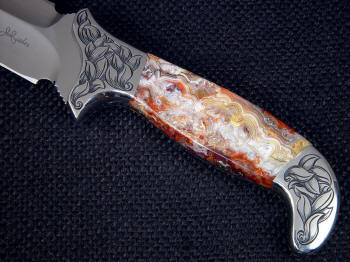
"Kotori"
“Better to have, and not need, than to need, and not have.”
--Franz Kafka
Writer, 1883-1924
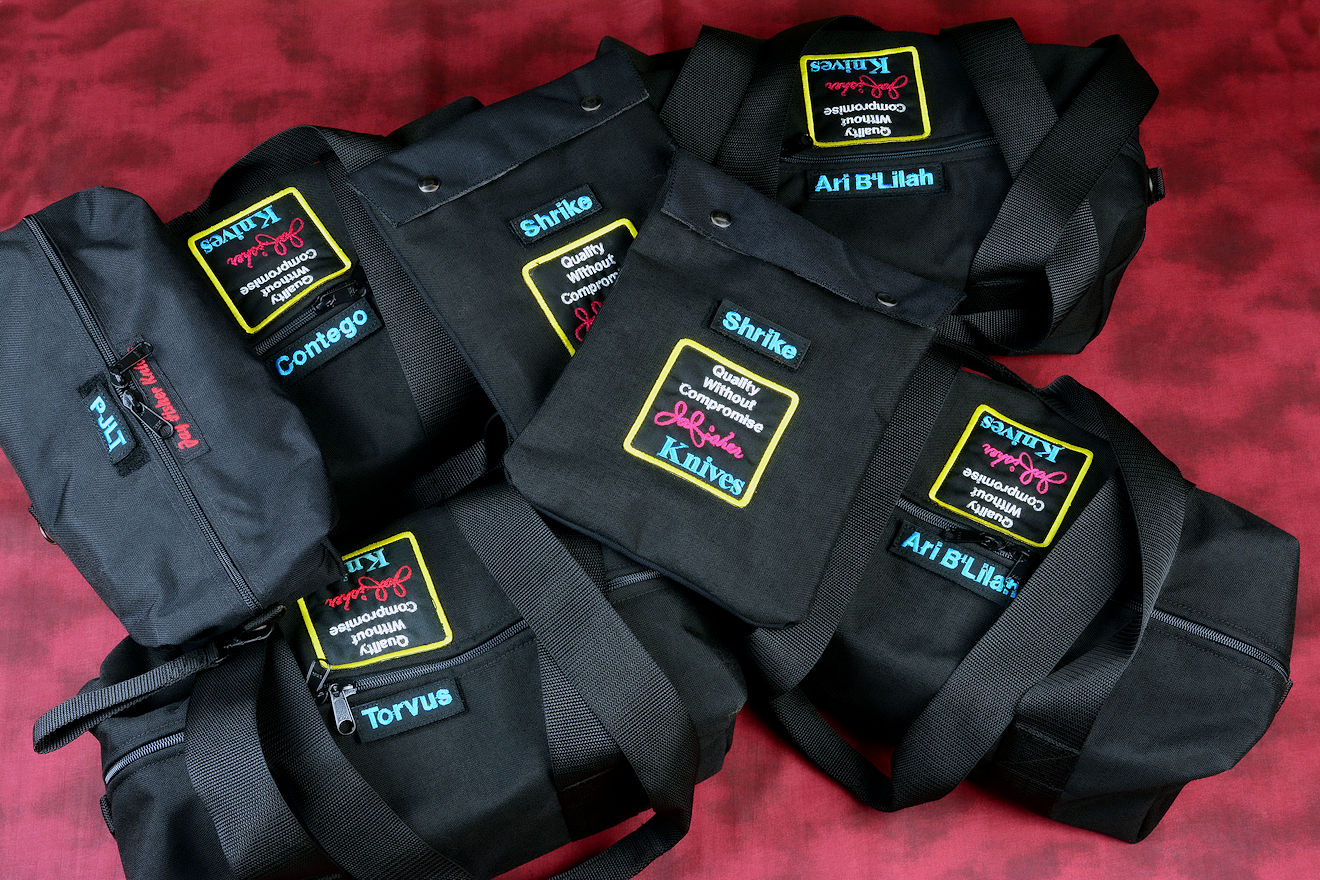
By now, you know that I make a lot of large kits for the tactical and counterterrorism knives. If you've seen enough of my kits, and read the "Accessories" pages, it's clear that the needs for the full kits are well-established. Since I'm committed to the entire knife experience of my clients and patrons, every single part, piece and device is important.
When a knife is sold, it must make it to the client. This is shipping and delivery, and encompasses a whole science of packing and transport. This applies to knife kits, but is not specifically what this page is about.
You never know what mission, what application the user of a tactical or counterterrorism knife may have. Even he doesn't know until he's briefed and an outline of the mission is made. Consequently, he doesn't have the time to wait as custom pieces and accessories are built; he must have them available for immediate use. This is why I include so many items in the larger kits.
As my kits and amount of components grew, I needed a way to keep all the elements together, organized and accessible. I didn't want my clients to lose even one machine screw, or one belt loop plate, or one ring, or piece of cord, or tool.
I realized (with my wife's help) that a container was as important as what was in it. So I started making bags. Simple things—single-stitched drawstring bags were good enough in the beginning. This lasted until I saw that the drawstring bag was so important and depended-upon that at least one of them ripped at the seam from the components and accessories being shoved into it. I realized that the bag was much more important than I first thought.

I improved the drawstring bags, with double-row stitching, and heavier canvas. I added Coyote Brown as a complete color for some of the kits. I increased the thread size, I purchased a heavy sewing machine that would sew even thicker fabrics. I never wanted to see a tear-out again. I realized that it was important to identify the bags and the kit within, so I purchased and learned to use an embroidery machine, and then another embroidery machine to improve that aspect even more.
Then, as you can see on this website, more and more components were requested and the simple drawstring bags had to be larger. I did plenty of research on how to keep the kits together, as complete units. More than a container to deliver a knife in, it had to be an independent appliance sturdy enough to last.
I looked at metal and plastic waterproof boxes and Pelican® cases. Nice, but they were extremely bulky. The bad thing about a hard case is that you can't stuff it into a locker, or nestle it into a tight spot in a barracks, or shove it full of stuff and gear that might accompany you to a location.
A bag was nicer, it can fold, stuff, bend, and accommodate whatever opening my clients can find. If you're military, you know how important this kind of packing skill is. To go light, my clients can remove items they don't need from the bag, and the bag gets smaller, fitting in any tight spot.
Yes, I became committed to bags for tactical and counterterrorism knives... and I still am.
To improve my bags, I started examining duffles. There are a bewildering amount of duffle bags out there, of all sorts and sizes. Unfortunately, they all have one thing in common: they are thin, made of weak material, and poorly stitched and constructed. I didn't see a single one that was suitable for this use.
What I wanted was a toolkit kind of duffle, durable and strong. Some of the tool companies make some great ones, but they are always the wrong size, the wrong shape, or made for a particular application that wasn't what I needed. Tool bags are ridiculous with too many small pockets, and flaps and layers of useless canvas that small parts get lost in. In fact, they seem to pride themselves on the amount of pockets! Ask any technical professional who uses tools, and you'll quickly find that a simple bag is better, complexity does not increase utility. Tool bags are seldom water resistant, resistant to the elements, or secure with closures, and none of them are the right color or shape. They have the cheapest, worst zippers (if they have any closure at all), and sometimes bizarre, rigid shapes that can't collapse. Tool bags didn't work either.
I simply could not find anything that I needed, so I had to make it myself.

Personal background here: some of my ancestors were tailors. I'm not claiming that I was born with innate knowledge of sewing, design, and construction with textiles, but I've got to admit, like knifemaking, I love sewing. Sure, I've sewn sheaths for many decades, with some of the toughest, thickest applications possible. However there is more to consider in making the entire container; it's really another aspect of the field of fine craft.
I suppose the desire comes from the idea that a neat, tidied-up complete kit including all of the components, sheaths, accessories, and fittings can be kept together, as a unit, ready for transport, gearing up and using. This is, after all, an important part of my "Service" aspect of my tradecraft.
Knifemaking is not just making the knife; it's making everything that the knife needs, because if the knife needs it to function, and this means the client or patron needs the equipment to make the knife function for him. Otherwise, a knife maker is just supplying the client with the engine, and not the vehicle.
I've always complained—as have my clients—that there is distinct neglect of this part of our tradecraft. The disregard for what a tactical knife user needs is persistent and corrosive, leaving clients with unanswered questions, and unused, unavailable tools.
Since knives are made to be used, and tactical and counterterrorism knives can see the most extreme use, the components must all be made to interface and use as well; it's part of the craft.

I still make the drawstring bags, constantly improving on even those. They are used for simple projects: knives with only a few components, or a knife and sheath only, or the most basic gear. The drawstring bags are also used inside the duffle kits to protect and house leather sheaths, because leather surfaces can be scratched by the metal components of the tactical kit. They also help "police-up" loose components in the kits.
I started with plastic waterproof containers for the metal fasteners and hardware of the kits, and moved on to metal boxes or "tins." Some of these are screw-topped, some are hinged, some are tins that hold all of the smaller pieces for the kits. Most of these small parts are fasteners, machine screws, accessory belt clips that come with the flashlights, and spare bungee cords. Also nested in the tins are the different thicknesses of dog-leg titanium springs for the hybrid tension-lock sheaths. There is a can that is just right for the anodized aluminum horizontal belt loop plates, the additional sizes of die-formed aluminum belt loops, and for the horizontal and vertical flat clamping straps. These cans, on my latest models, are tough and durable, and held closed and together with wide elastic straps.
I needed space enough in the duffles for Belt Loop Extenders, then even larger Extra Length Belt Loop Extenders, and more room for Sternum Harnesses, for HULA flashlights, LIMA flashlights and all their hardware. I added a large diamond sharpener since diamond is the only material that will effectively sharpen the super-durable high alloy steels that have had my T3 cryogenic heat treatment. The sharpeners themselves needed their own bag, since they will absolutely scratch, scar, and tear everything they touch!
I needed a place to store lanyards, and tools to change-up the assembly, for the paperwork and instruction, for the archival tags. Then, as some of the larger kits needed all of the modular kit accessories, it required even larger bags to accommodate stainless steel welded frames, ventilated mesh pads, and more equipment. Then, some clients requested both black and coyote kits, all together, doubling the amount of accessories and requiring even larger bags!
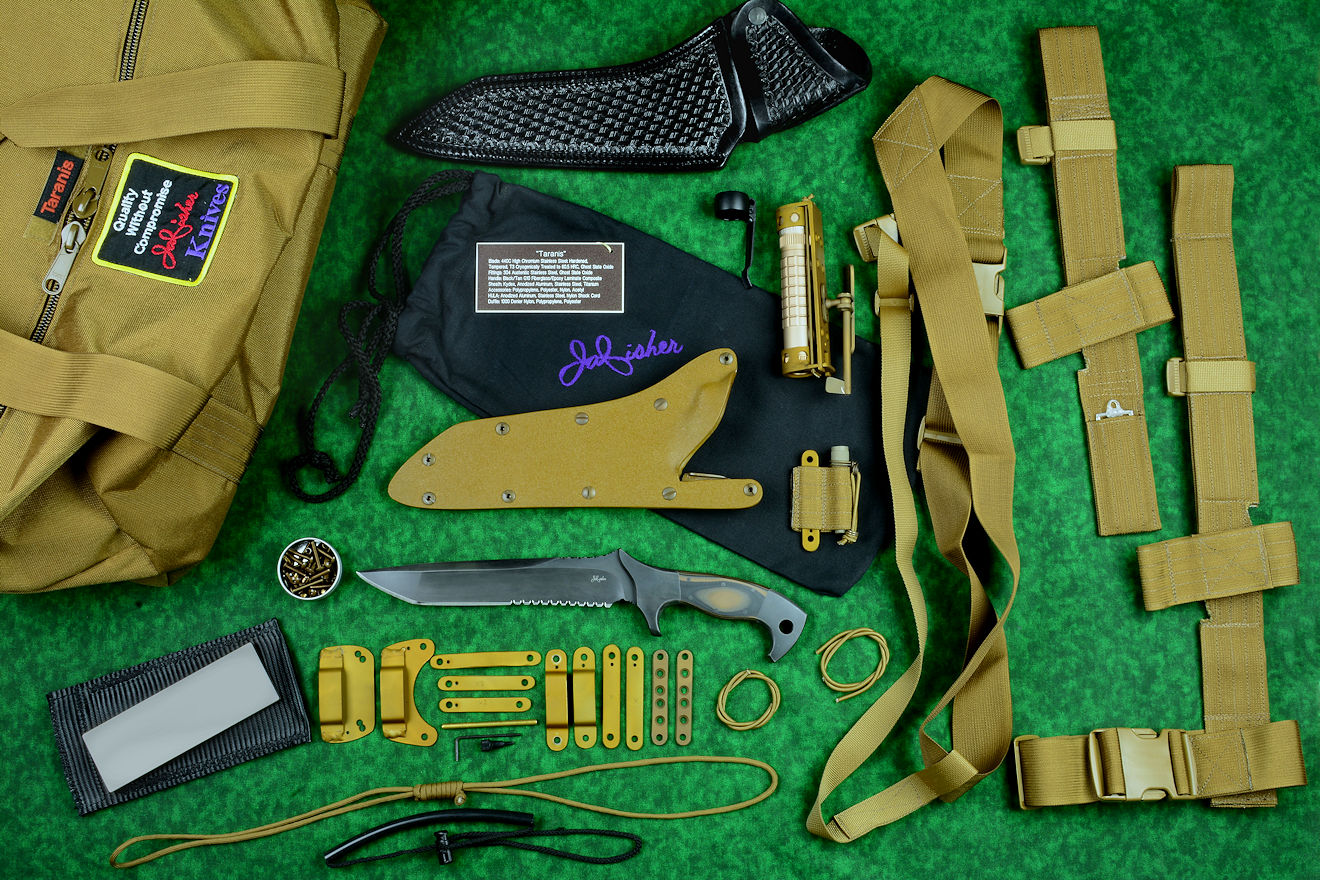
I realized that nylon Cordura® (also called ballistic nylon) was my answer for the kit bags. It's incredibly tough and durable, and can be acquired in different types and thickness of fibers, with polyurethane coating making it nearly waterproof. The best material even has an additional water-resistant top coat for increased protection.
If you look around at bags and packs, you'll quickly find that most of them are made of thin, weak, and cheap materials. Even if they are made with Cordura® or ballistic nylon, it's often the thinnest type, with meager stitching done more for speed and appearance than strength.
They do this because the maker of the bag is a manufacturer, and is always lowballing—in a hurry—to make many, many cheap bags and sell them quickly, for as high a price as possible in the mass market. Most of them are made at foreign sweat shops by unskilled labor. So there is a lot of thin, weak material (200 Denier nylon is commonplace), and cheap, weak thread is all they use. The thread, by the way is what makes the bag durable or weak, and is no place to cut corners. The thicker, stronger threads require larger, more robust machines, and these are expensive to purchase, use, and maintain. The larger machines work slower as well, and this is another reason manufacturers stay away from them.
Not all Cordura® is the same. The manufactured bag maker can claim "made of Ballistic Cordura Nylon," but then use the thinnest available. Also, much of it is uncoated and may be permeable. These thinner textiles are just too weak for my purpose, and I realized that I would have to make my own bags to offer the very best storage and transport possible for my clients. They deserve it.
I began to use thicker material, more durable, and I employed larger machine-stitching. I moved to polypropylene webbing, or Mil-Spec nylon webbing, and to acetyl or steel fixtures. I started working in 600 Denier Cordura and now work with a lot of 1000 denier and even 1680 denier nylon in most of the bags and duffles, even the smallest. I stitch with T90, T138, T277, and even T346 thread: bonded polyester, high strength nylon, and even Teflon and Kevlar threads in extreme-use rigs. All webbing and material ends are melted and fused to prevent unraveling, all stitches are backstitch-locked at the terminal stitch points. A weak point on all bags is the zipper; I moved to #8 and #10 water-resistant zippers, with sewn-in webbing stops, dual pulls, and water-resistant designs. I used multiple stitch runs throughout, double and triple-stitching at all the seams. I added reinforced webbing handles that wrap completely around the duffles, and strengthen the Cordura with three to five-row stitching throughout. I reinforced the insides of the web handle terminations with interior web-patches so they will never pull out or tear. I added heavy acetyl or even steel D-rings at the zipper terminal ends for accessory or shoulder straps and zipper opposition, making the zippers easier to open. I used the same skills I use in making the web- and strap-based accessories like the UBLX, Sternum Harness, or Shoulder Harness. If you've seen those, you know that they are the best made in the world.
I've even improved the latest drawstring bags with proper, overstitched-edge, multi-layered interiors. Even the inside of the bag or duffle is important.
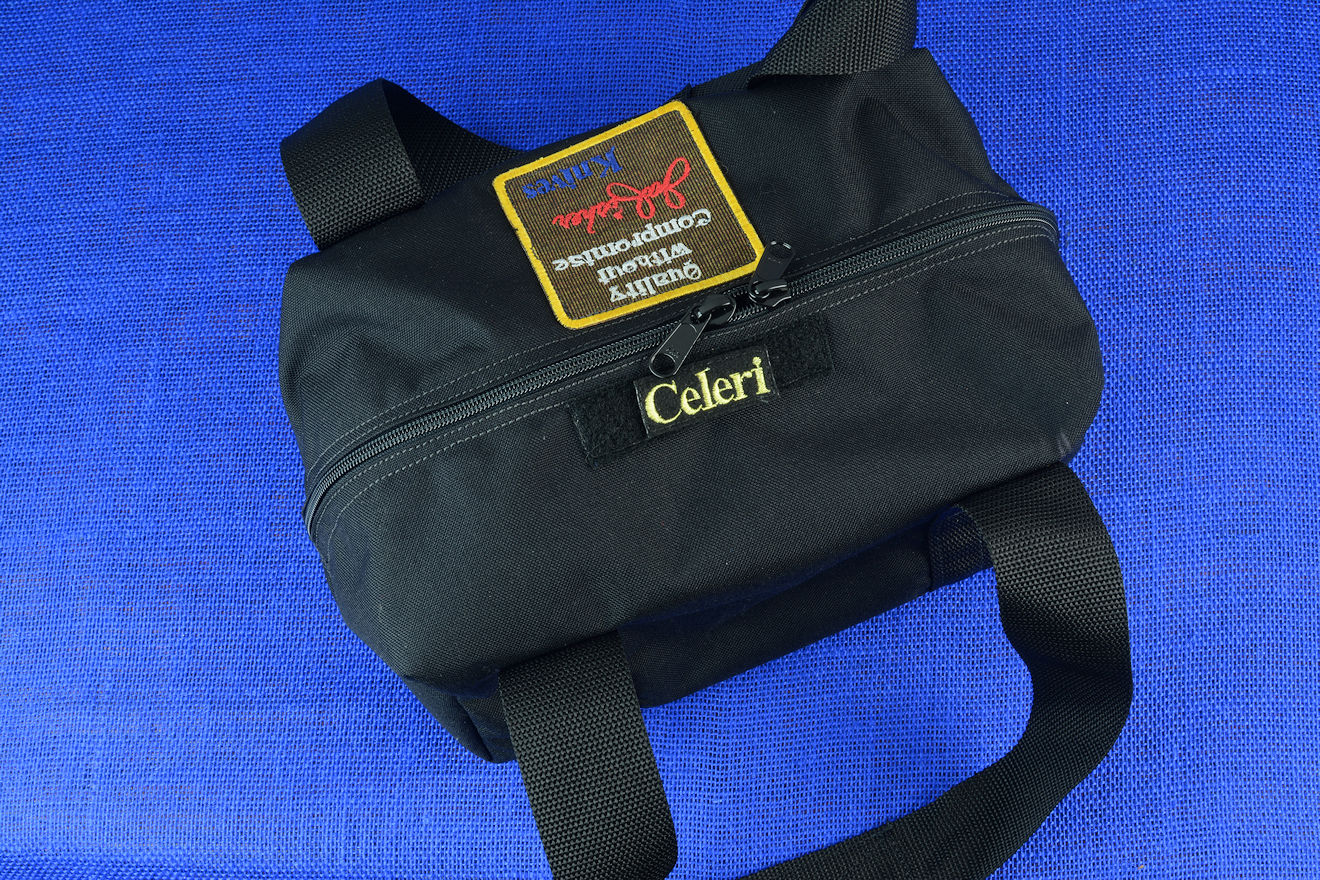
I designed the bags to be box-ended, not round. This is for stowage, since there really are no round spaces to store things in any transport vehicle or method. A round duffle is easy to make but it's impractical; a collapsible box is the best design for stowage.
Web handles and straps wrap completely around the bottoms of the larger bags, supporting and protecting the nylon, while keep the bag lightweight without adding plastic plates, legs, or feet.
In my latest iterations, I've started lining my duffles with heavy polyester felt. This creates a greater thickness and durability, resisting tears by sharp corners or edges, and offering fantastic padding for the duffles and the gear inside. For the largest duffles, I've even added padded shoulder straps (removable, of course) for the long hauls, complete with stainless steel swivel snaps. The smallest duffles, only containing the knife, sheath, and a few basic belt loop accessories, have removable stitched web "hanger" handles.
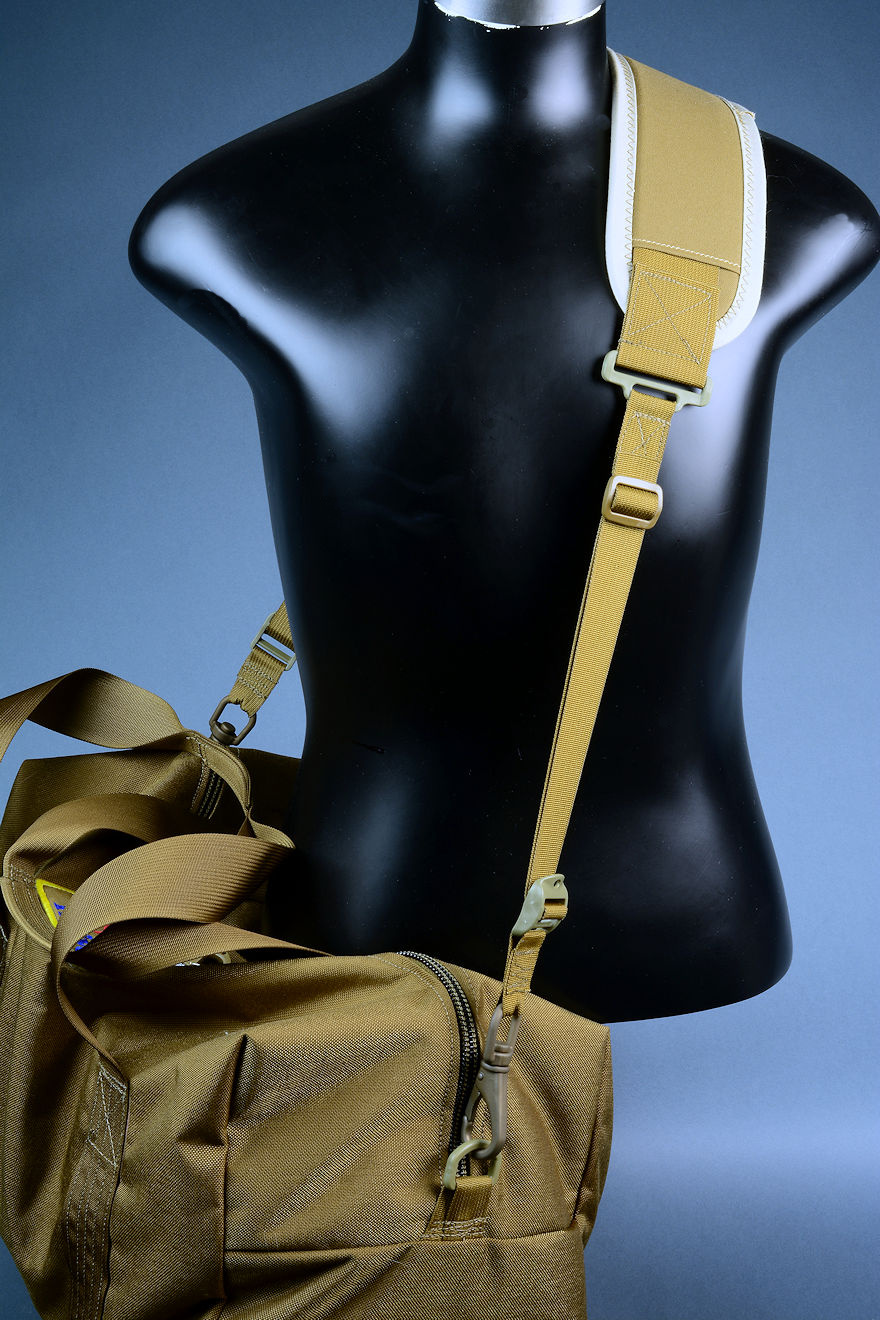
Identification and marking has improved, I now completely make and apply custom patches to the bags. Clients started requesting that I identify the knives within by the name of the knife, since some have several kits and didn't want the parts or accessories to become mixed up.
I designed removable hook and loop name patches that you can see in the photos on this page, so my clients know which knife, and which accessories go with each kit. If they're travelling, and don't want the name out there, they simply pull off the name patch and throw it in the bag.
I also had to design smaller "Envelope-Style" bags; some tactical knives come with a minimum kit. These are simple knife-sheath combinations, or small kits that have only the basic belt loop set, and maybe a single belt loop extender but nothing else. On envelope-style bags requiring dot snaps, I only use marine-grade waterproof stainless steel, so corrosion is never a problem. Even the smaller kits deserve the respect and completion of a good bag.
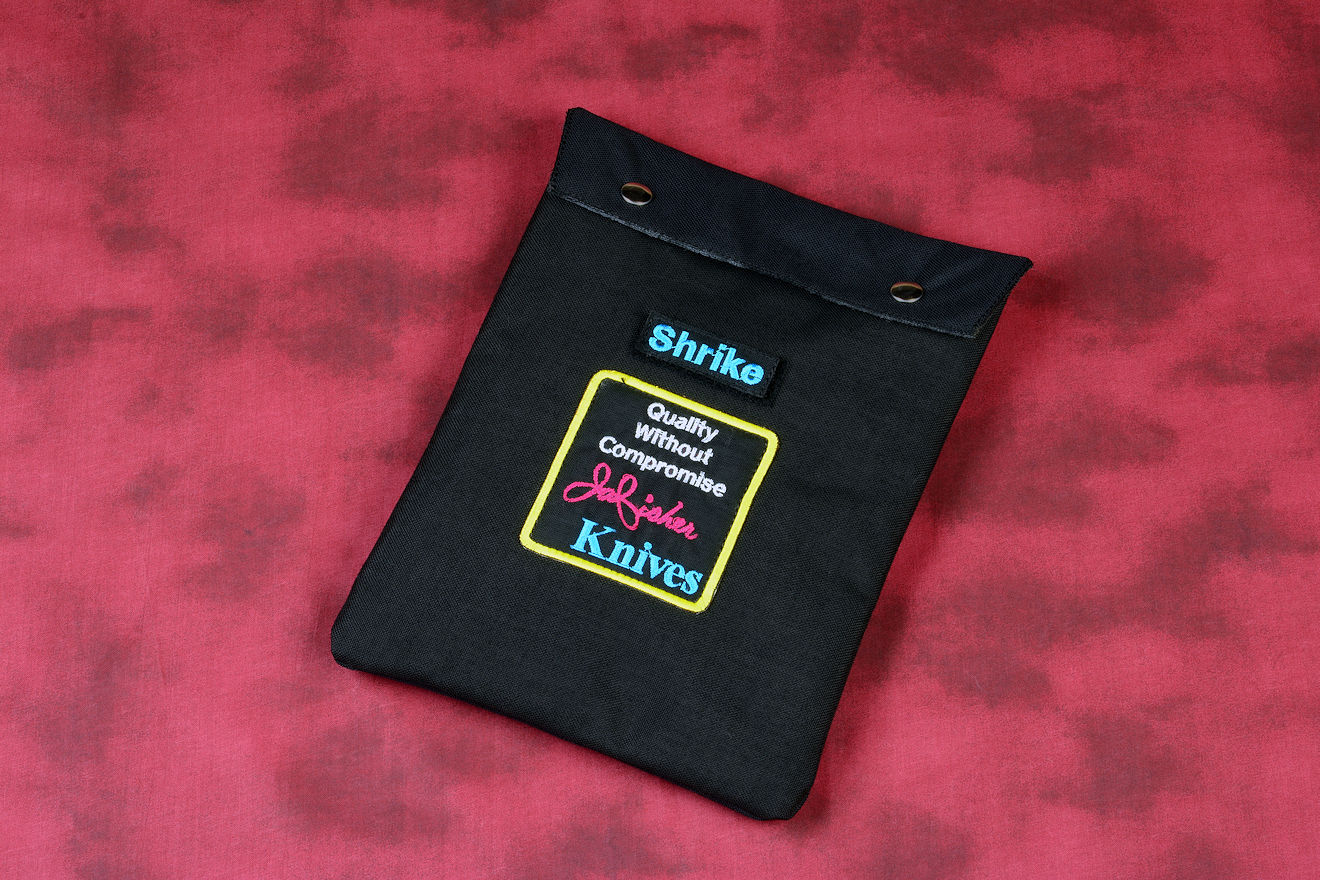
As my bags improved, I realized that the torn drawstring bag I once saw, or the plastic bags of my earliest years were long-passed. In fact, I believe that I now make a bag/duffle that will absolutely outlive me, and probably even my younger clients. Maybe, my bags will last as long as the knife kit!
I'll continue to improve them, I'm sure. You'll see a lot of variation in them in the photos on this page and in the large photo sets for my tactical and counterterrorism knives on their associated pages. This is never a static tradecraft and improvement and evolution of designs, applications, and accessories is always expected.
The bags are good enough that I now have some clients buying extra bags for their own non-knife use, and purchasing bags for others, simply because they are so well-made. I'm proud to put my patch, my name, my maker's mark on every single one.
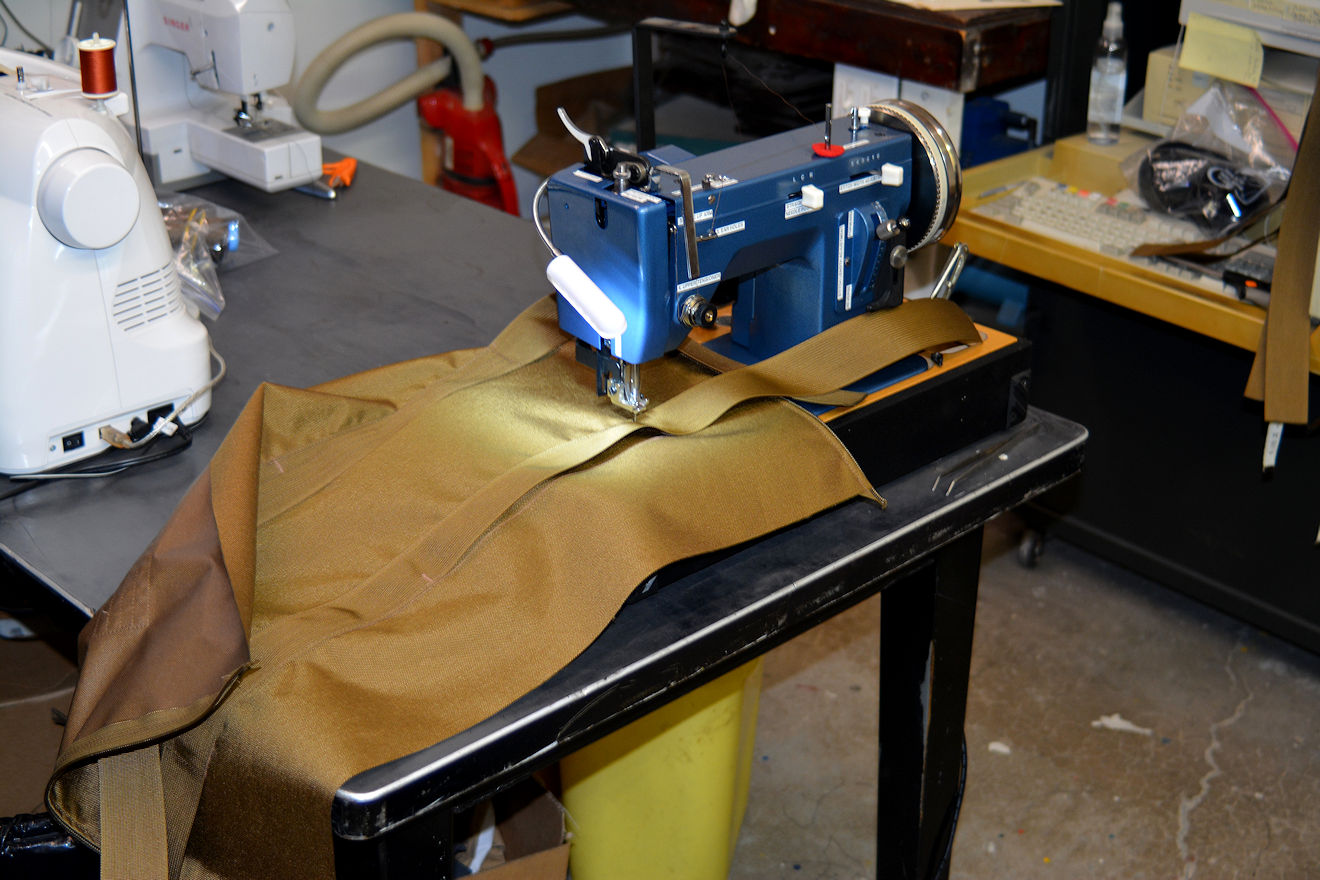
| Main | Purchase | Tactical | Specific Types | Technical | More |
| Home Page | Where's My Knife, Jay? | Current Tactical Knives for Sale | The Awe of the Blade | Knife Patterns | My Photography |
| Website Overview | Current Knives for Sale | Tactical, Combat Knife Portal | Museum Pieces | Knife Pattern Alphabetic List | Photographic Services |
| My Mission | My Knife Prices | All Tactical, Combat Knives | Investment, Collector's Knives | Copyright and Knives | Photographic Images |
| The Finest Knives and You | How To Order | Counterterrorism Knives | Daggers | Knife Anatomy | |
| Featured Knives: Page One | Purchase Finished Knives | Professional, Military Commemoratives | Swords | Custom Knives | |
| Featured Knives: Page Two | Order Custom Knives | USAF Pararescue Knives | Folding Knives | Modern Knifemaking Technology | My Writing |
| Featured Knives: Page Three | Knife Sales Policy | USAF Pararescue "PJ- Light" | Chef's Knives | Factory vs. Handmade Knives | First Novel |
| Featured Knives: Older/Early | Bank Transfers | 27th Air Force Special Operations | Food Safety, Kitchen, Chef's Knives | Six Distinctions of Fine Knives | Second Novel |
| Email Jay Fisher | Custom Knife Design Fee | Khukris: Combat, Survival, Art | Hunting Knives | Knife Styles | Knife Book |
| Contact, Locate Jay Fisher | Delivery Times | Serrations | Working Knives | Jay's Internet Stats | |
| FAQs | My Shipping Method | Grip Styles, Hand Sizing | Khukris | The 3000th Term | Videos |
| Current, Recent Works, Events | Business of Knifemaking | Concealed Carry and Knives | Skeletonized Knives | Best Knife Information and Learning About Knives | |
| Client's News and Info | Military Knife Care | Serrations | Cities of the Knife | Links | |
| Who Is Jay Fisher? | The Best Combat Locking Sheath | Knife Sheaths | Knife Maker's Marks | ||
| Testimonials, Letters and Emails | Knife Stands and Cases | How to Care for Custom Knives | Site Table of Contents | ||
| Top 22 Reasons to Buy | Tactical Knife Sheath Accessories | Handles, Bolsters, Guards | Knife Making Instruction | ||
| My Knifemaking History | Loops, Plates, Straps | Knife Handles: Gemstone | Larger Monitors and Knife Photos | ||
| What I Do And Don't Do | Belt Loop Extenders-UBLX, EXBLX | Gemstone Alphabetic List | New Materials | ||
| CD ROM Archive | Independent Lamp Accessory-LIMA | Knife Handles: Woods | Knife Shop/Studio, Page 1 | ||
| Publications, Publicity | Universal Main Lamp Holder-HULA | Knife Handles: Horn, Bone, Ivory | Knife Shop/Studio, Page 2 | ||
| My Curriculum Vitae | Sternum Harness | Knife Handles: Manmade Materials | |||
| Funny Letters and Emails, Pg. 1 | Blades and Steels | Sharpeners, Lanyards | Knife Embellishment | ||
| Funny Letters and Emails, Pg. 2 | Blades | Bags, Cases, Duffles, Gear | |||
| Funny Letters and Emails, Pg. 3 | Knife Blade Testing | Modular Sheath Systems | |||
| Funny Letters and Emails, Pg. 4 | 440C: A Love/Hate Affair | PSD Principle Security Detail Sheaths | |||
| Funny Letters and Emails, Pg. 5 | ATS-34: Chrome/Moly Tough | ||||
| Funny Letters and Emails, Pg. 6 | D2: Wear Resistance King | ||||
| The Curious Case of the "Sandia" | O1: Oil Hardened Blued Beauty | ||||
| The Sword, the Veil, the Legend |
Elasticity, Stiffness, Stress, and Strain in Knife Blades |
||||
| Professional Knife Consultant |
Heat Treating and Cryogenic Processing of Knife Blade Steels |